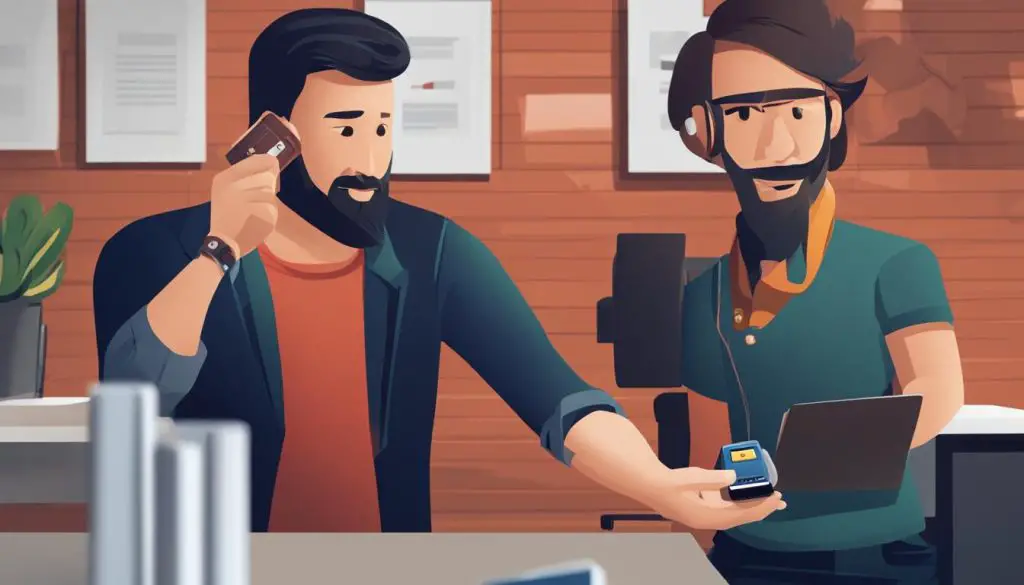In the design industry, the practice of designers giving clients their PSD (Photoshop Document) files can vary. Some designers believe it is best to hold onto the source files unless explicitly outlined in the contract, while others may provide them to clients for various reasons. This issue can be polarizing among designers, as there are pros and cons to both approaches. It ultimately comes down to factors such as trust in the client, the value of the files, and the potential for future work. Let’s explore more insights into this topic.
Key Takeaways:
- The practice of designers giving clients their PSD files can vary in the design industry.
- Factors such as trust, file value, and potential for future work influence the decision.
- Some designers prefer to hold onto source files, while others provide them to clients.
- Clients may have valid reasons for requesting native files, such as template needs or future edits.
- Designers may be reluctant to give PSD files due to business decisions or client limitations.
- Effective communication and understanding client needs are crucial in designer-client collaboration.

Reasons Clients Might Ask for Native Files
When working with designers, clients may have valid reasons for requesting native files, also known as PSD files. These files are the source files that contain all the layers, elements, and design components used to create the final design. Understanding the reasons behind a client’s request can help designers better meet their needs and expectations. Let’s explore some common reasons why clients might ask for native files:
- Templates: Clients may want to have access to the native files to use them as templates for future projects. This allows them to maintain consistency in their branding and design across different materials.
- Repurposing: Native files give clients the flexibility to repurpose the design for different formats or platforms. They can make adjustments or variations to the design without having to recreate it from scratch.
- Edits: Clients may require the ability to make edits to the design in the future. This could be for updating information, making minor changes, or adapting the design to new requirements.
- Peace of mind: Some clients may request native files as a form of insurance in case the designer becomes unavailable or unresponsive in the future. Having the source files gives them the assurance that they can continue working on the design if needed.
- Creative rights: Clients who want to retain full creative rights to the design may request native files. This allows them to work with other designers or make modifications without relying on the original designer.
It is crucial for designers to have open discussions with clients to understand their specific reasons for requesting native files. This communication helps establish clear expectations and avoids any misunderstandings or conflicts down the line. Designers can also educate clients about the implications and potential fees associated with providing native files, ensuring a mutually beneficial collaboration.
Table: Pros and Cons of Providing Native Files to Clients
| Pros | Cons |
|---|---|
| Allows clients to use designs as templates | Loss of control over how the design is used |
| Enables clients to repurpose designs for different formats | Potential for misinterpretation or misuse of the design |
| Provides flexibility for future edits and modifications | Risk of clients making changes that compromise the design integrity |
| Offers peace of mind to clients in case of designer unavailability | Requires trust in the client’s ability to handle native files responsibly |
| Gives clients full creative rights and independence | Potential for clients to work with other designers without involving the original designer |
As shown in the table above, there are both advantages and disadvantages to providing native files to clients. Designers need to weigh these factors and make an informed decision based on the specific circumstances of each project and client.
Why Designers Might Be Reluctant to Give PSD Files
There are several legitimate reasons why designers might be reluctant to give clients their PSD files. One of the main reasons is that it can be seen as a business decision based on the agreed-upon deliverables. Designers typically provide finished, print-ready or web-ready files as part of their client deliverables. The source files, such as PSD files, may not be included unless specifically requested and negotiated as part of the project scope and contract.
Another factor that may contribute to designers withholding PSD files is the client’s software limitations. Not all clients have access to or are proficient in using design software, particularly programs like Adobe Photoshop. Without the necessary software, the client may not be able to open or work with the PSD files effectively, rendering them useless to the client and potentially causing frustration.
Similarly, computer hardware limitations can also pose a problem. Design files, especially those in PSD format, can be large and require significant processing power to open and edit. If the client’s computer hardware is not capable of handling the file size or demands, it can lead to slow performance or crashes, further complicating the use of PSD files.
Furthermore, designers may be reluctant to provide PSD files due to the potential for file confusion. Designers carefully organize and layer their PSD files to facilitate efficient workflow and revisions. If clients are unfamiliar with PSD files or accidentally make changes in the wrong layers, it can lead to confusion and potential problems in the final design. To avoid these issues, designers may choose to only provide the final, flattened files, ensuring that the design is preserved without the risk of unintentional modifications.

Table: Pros and Cons of Providing PSD Files to Clients
| Pros | Cons |
|---|---|
| Allows clients to have complete control over the design | May lead to misuse or unauthorized distribution of design files |
| Enables clients to make future edits and updates | Client may lack the necessary software to open and work with PSD files |
| Builds trust and strengthens the client-designer relationship | Increases the risk of file confusion and potential design inconsistencies |
| Provides clients with the ability to repurpose design elements | Designers may lose control over their work and creative rights |
While there may be legitimate reasons for designers to be reluctant in giving clients their PSD files, it is essential for designers and clients to have clear communication regarding file deliverables and expectations. By understanding the reasons behind both parties’ perspectives, designers can make informed decisions that protect their work while still meeting client needs. Ultimately, establishing trust, setting proper expectations, and fostering a collaborative relationship can lead to a successful project outcome.
Conclusion
In conclusion, achieving a successful client-designer collaboration requires adherence to best practices in file sharing that address the unique needs of both parties involved. Open and honest communication is essential throughout the design process to establish clear expectations and deliverables.
Designers should carefully consider the specific requirements outlined in the contract, determining which files are to be delivered to the client. While it may be necessary to withhold PSD files to protect creative work and ensure proper usage, it is equally important to respect client needs and potential future requirements.
By finding a balance between preserving intellectual property and meeting client needs, designers can foster a healthy and trust-based working relationship. Transparency in discussing the implications of sharing source files and any associated fees can help manage client expectations and prevent misunderstandings.
Ultimately, the success of a client-designer collaboration lies in understanding and addressing both parties’ concerns. By following industry best practices and maintaining effective communication, designers can establish long-term partnerships with satisfied clients.
